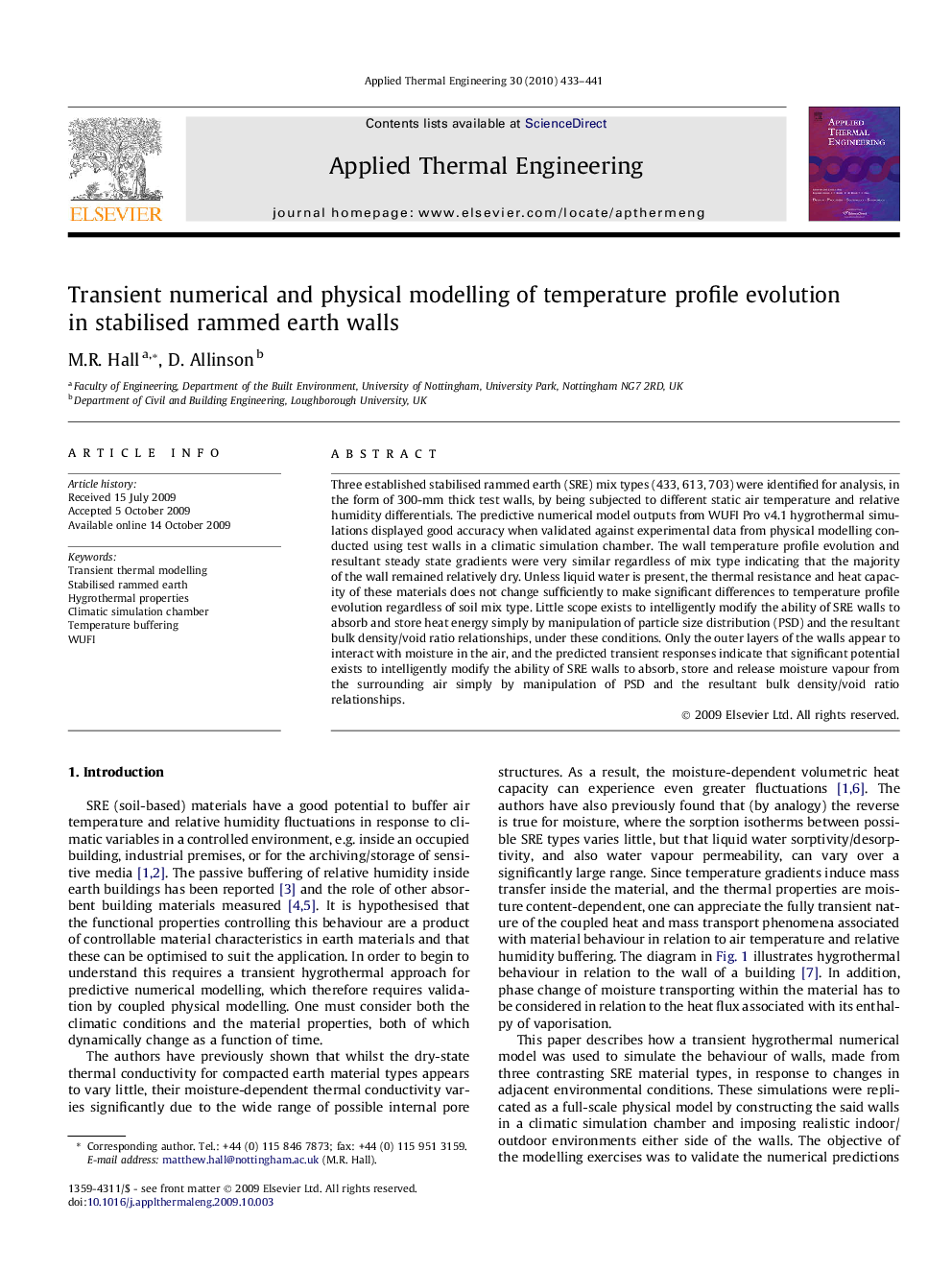| Article ID | Journal | Published Year | Pages | File Type |
|---|---|---|---|---|
| 648420 | Applied Thermal Engineering | 2010 | 9 Pages |
Three established stabilised rammed earth (SRE) mix types (433, 613, 703) were identified for analysis, in the form of 300-mm thick test walls, by being subjected to different static air temperature and relative humidity differentials. The predictive numerical model outputs from WUFI Pro v4.1 hygrothermal simulations displayed good accuracy when validated against experimental data from physical modelling conducted using test walls in a climatic simulation chamber. The wall temperature profile evolution and resultant steady state gradients were very similar regardless of mix type indicating that the majority of the wall remained relatively dry. Unless liquid water is present, the thermal resistance and heat capacity of these materials does not change sufficiently to make significant differences to temperature profile evolution regardless of soil mix type. Little scope exists to intelligently modify the ability of SRE walls to absorb and store heat energy simply by manipulation of particle size distribution (PSD) and the resultant bulk density/void ratio relationships, under these conditions. Only the outer layers of the walls appear to interact with moisture in the air, and the predicted transient responses indicate that significant potential exists to intelligently modify the ability of SRE walls to absorb, store and release moisture vapour from the surrounding air simply by manipulation of PSD and the resultant bulk density/void ratio relationships.
